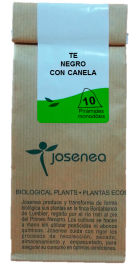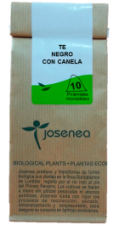

Cinnamon Features: Cinnamon as a spice is obtained by peeling and rubbing the tender branches, ie they bark without suber external and underlying parenchymal (second crust).
It is used in branch and ground.
The cinnamon tree (Cinnamomum zeylanicum or Cinnamomum verum) is an evergreen, about 10 to 15 m, from Sri Lanka.
It requires a hot and humid climate, with average annual temperature between 24 and 30 at altitudes between 0 and 600 m.
The best plantations grow on wet soils, sandy and muddy texture, deep high in organic matter and good drainage.
A very muddy ground would limit plant growth and this would produce a low-quality crust.
It is now well grown in Sri Lanka, India, southern China, Madagascar and Brazil and in culture is usually smaller, adopting shaped evergreen shrub, its bark, the most important part, is grayish brown and has a perennial cycle.
Its stem is woody. The leaves are about 7-25cm long and 3.8 cm wide, have pointed oval shape, green color and bright red beam with five ribs, one medial and two arcuate side converging in the base and apex, and another set of ribs forming a right angle therewith, the petiole is about 10 to 20 mm, sturdy with a winding concave shape.
Its flowers are hermaphroditic and white or greenish yellow, are covered with hairs, have bracts and are actinomorphic.
Flowers of about 0, 5 cm are grouped into panicles born in the leaf axil or also at the terminal and come to have a similar length of the leaves.
The fruit is a berry long ellipsoidal about 12.5 cm of very dark color; bluish-black with a single seed within.
It reproduces by seeds containing the berry and by vegetative propagation.
Constituents: Composition: - cinnamaldehyde is the major component, also eugenol and cinnamic alcohol.
The aroma is due to aromatic essential oil it constitutes 0.5-2.5% of the composition.
- With less proportion we are trans-cinnamic acid, hydroxycinnamic aldehyde or aldehyde-methoxycinnamate, cinnamic acetate, terpenes (linalool, diterpene), tannins, mucilage, OPCs, carbohydrates and traces of coumarin.
According to RFE,the dry drug must contain at least 12 ml / kg of essential oil.
-phellandrene, the carvacol and cinnamaldehyde "in vitro" .actividad anti C. albicans.(Even Fluconazole resistant) - Polycyclic Diterpenes, - Proanthocyanidic Oligomers, - essential oil (5-20 ml / kg) composed mainly of phenylpropane derivatives cinnamic aldehyde (65-80%), eugenol (> 10%) and ethyl cinnamyl, - also it contains a large number of mono- and sesquiterpenes.
